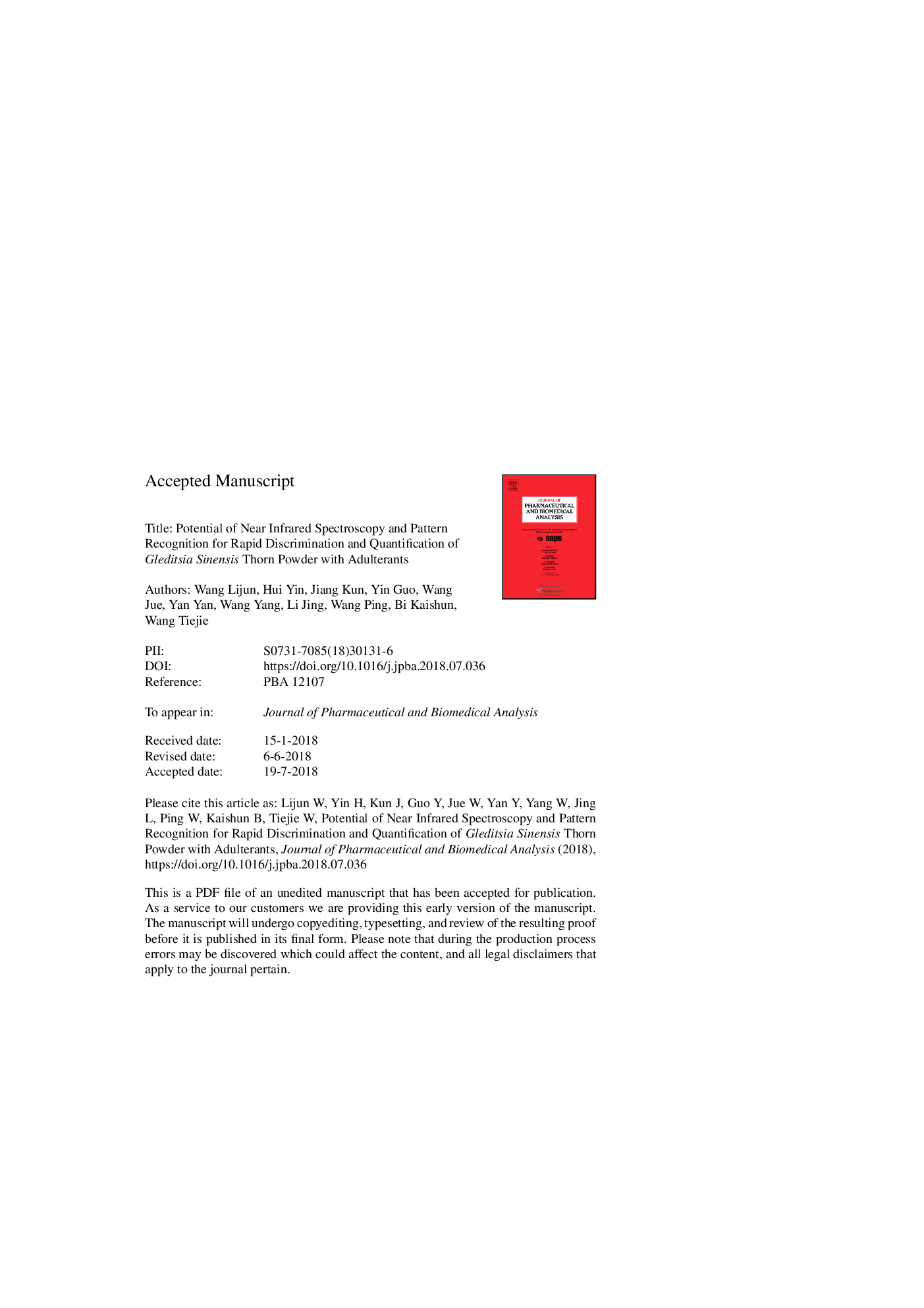| کد مقاله | کد نشریه | سال انتشار | مقاله انگلیسی | نسخه تمام متن |
|---|---|---|---|---|
| 7625498 | 1494575 | 2018 | 32 صفحه PDF | دانلود رایگان |
عنوان انگلیسی مقاله ISI
Potential of near infrared spectroscopy and pattern recognition for rapid discrimination and quantification of Gleditsia sinensis thorn powder with adulterants
دانلود مقاله + سفارش ترجمه
دانلود مقاله ISI انگلیسی
رایگان برای ایرانیان
کلمات کلیدی
موضوعات مرتبط
مهندسی و علوم پایه
شیمی
شیمی آنالیزی یا شیمی تجزیه
پیش نمایش صفحه اول مقاله

چکیده انگلیسی
The Gleditsia sinensis Lam thorn (GST) is a classical traditional Chinese medical herb, which is of high medical and economic value. GST could be easily adulterated with branch of Rosa multiflora thunb (BRM) and Rosa rugosa thumb (BRR), because of their similar appearances and much lower cost for these adulterants. In this study Fourier transform near-infrared spectroscopy (FT-NIR) combined with chemical pattern recognition techniques was explored for the first time to discriminate and quantify of cheaper materials (BRM and BRR) in GST. The Savitzkye-Golay (SG) smoothing, vector normalization (VN), min max normalization (MMN), first derivative (1â¯st D) and second derivative (2nd D) methods were used to pre-process the raw FT-NIR spectra. Successive projections algorithm was adopted to select the characteristic variables and linear discriminate analysis (LDA), support vector machine (SVM), as while as back propagation neural network (BPNN) algorithms were applied to construct the identification models. Results showed that BPNN models performance best compared with LDA and SVM models for it could reach 100% accuracy for identifying authentic GST, and GST adulterated with BRM and BRR based on the spectral region of 6500-5500 cmâ1 combined with 1â¯st D pre-processing. In addition, the BRM and BRR content in adulterated GST were determined by partial least squares (PLS) regression. The correlation coefficient of prediction (rp), root mean square error of prediction (RMSEP) and bias for the prediction by PLS regression model were 0.9972, 1.969% and 0.3198 for BRM, 0.9972, 1.879% and 0.05408 for BRR, respectively. These results suggest that the combination of NIR spectroscopy and chemometric methods offers a simple, fast and reliable method for classification and quantification in the quality control of the tradition Chinese medicine herb of GST.
ناشر
Database: Elsevier - ScienceDirect (ساینس دایرکت)
Journal: Journal of Pharmaceutical and Biomedical Analysis - Volume 160, 25 October 2018, Pages 64-72
Journal: Journal of Pharmaceutical and Biomedical Analysis - Volume 160, 25 October 2018, Pages 64-72
نویسندگان
Lijun Wang, Yin Hui, Kun Jiang, Guo Yin, Jue Wang, Yan Yan, Yang Wang, Jing Li, Ping Wang, Kaishun Bi, Tiejie Wang,